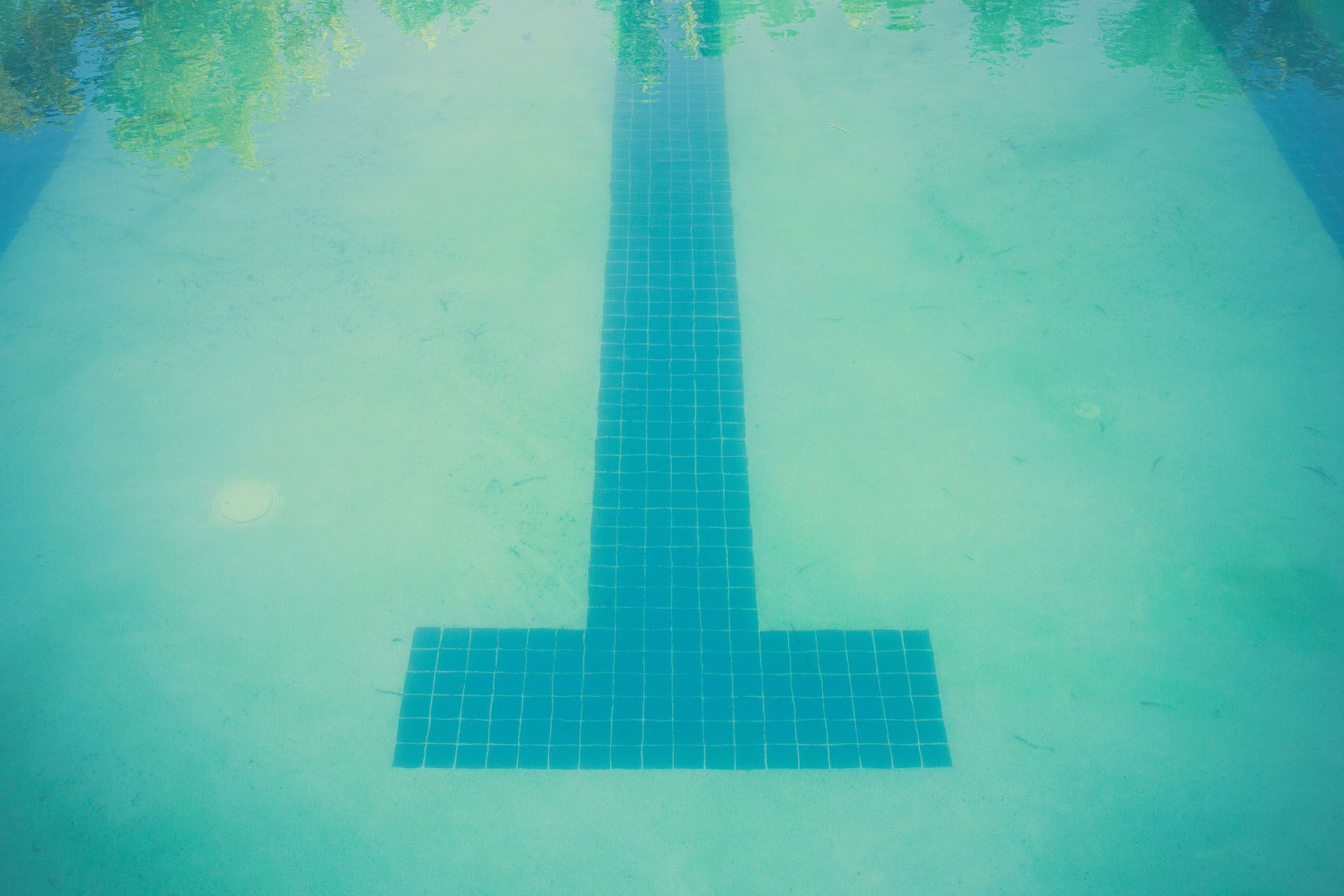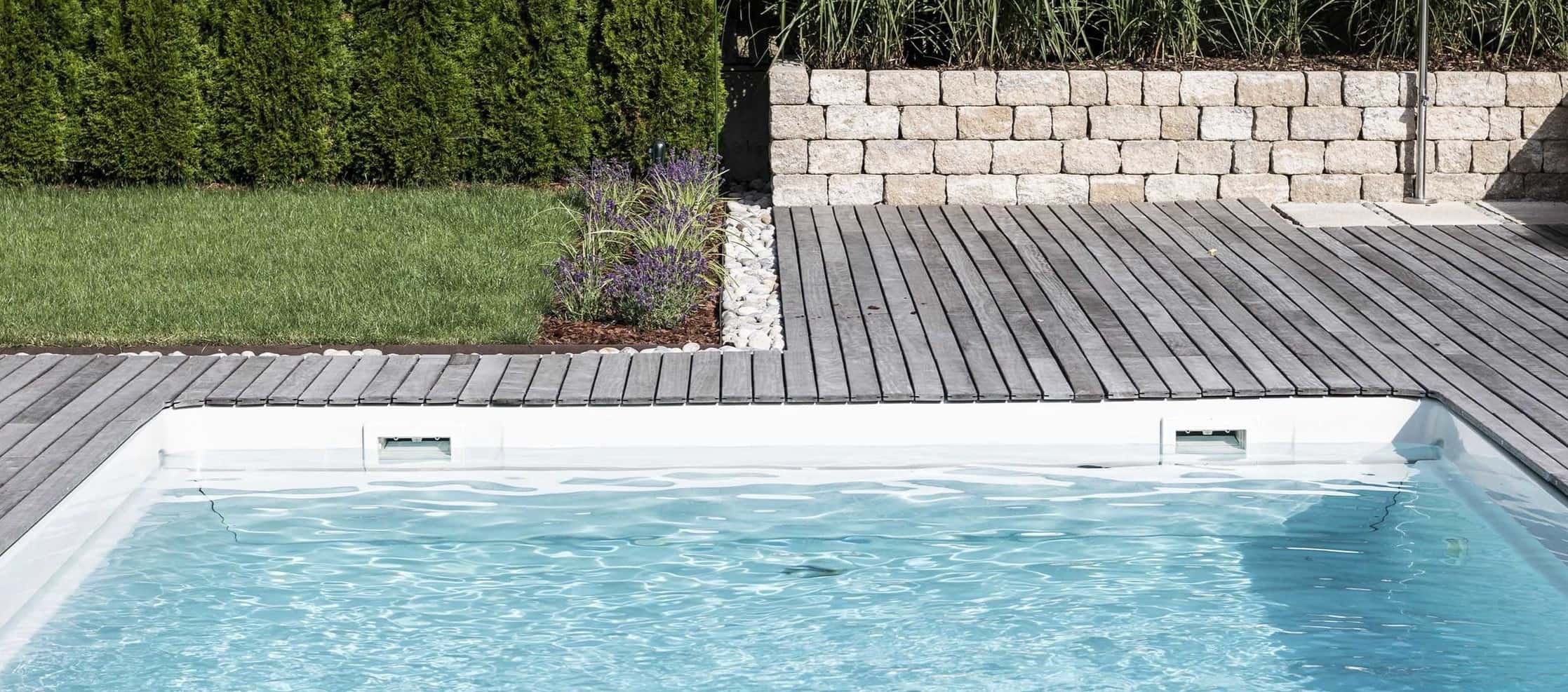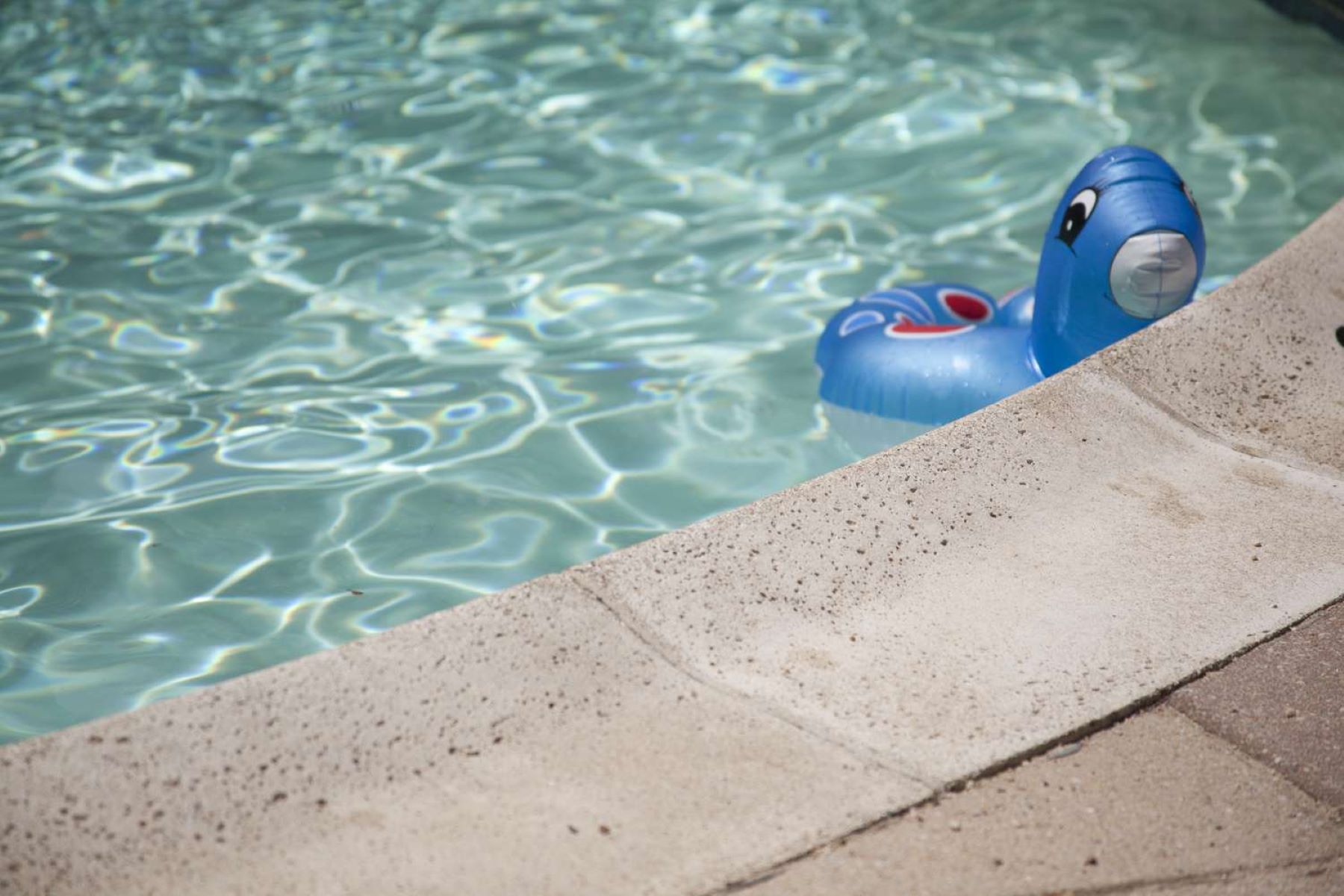Home>Gardening & Outdoor>Outdoor Recreation & Activities>Why Is A Swimming Pool Cloudy


Outdoor Recreation & Activities
Why Is A Swimming Pool Cloudy
Published: February 18, 2024
Discover why your swimming pool is cloudy and how to fix it. Get expert tips for maintaining crystal-clear water. Perfect for outdoor recreation and activities.
(Many of the links in this article redirect to a specific reviewed product. Your purchase of these products through affiliate links helps to generate commission for Storables.com, at no extra cost. Learn more)
Introduction
A sparkling, inviting swimming pool is a quintessential symbol of leisure and relaxation. However, the idyllic image of crystal-clear water can be marred by the unwelcome sight of a cloudy pool. Cloudy pool water not only detracts from the aesthetic appeal of the pool but also raises concerns about hygiene and safety. Understanding the causes of cloudy pool water, as well as effective prevention and treatment methods, is essential for pool owners and enthusiasts.
Cloudy pool water can be a source of frustration for pool owners, as it indicates an imbalance in the pool's chemical composition or a lack of proper maintenance. Whether it's a residential pool in a backyard oasis or a public pool at a bustling recreational facility, cloudy water can diminish the enjoyment and utility of the pool. Additionally, cloudy water may indicate the presence of harmful microorganisms, highlighting the importance of promptly addressing this issue to maintain a safe swimming environment.
In this comprehensive guide, we will delve into the various factors that contribute to cloudy pool water, ranging from improper water chemistry to environmental influences. By exploring the root causes of this common problem, we can gain valuable insights into effective preventive measures and maintenance practices. Furthermore, we will explore the diverse treatment options available to restore water clarity and ensure a pristine swimming experience.
Join us as we embark on a journey to uncover the mysteries of cloudy pool water and equip ourselves with the knowledge and strategies needed to maintain a crystal-clear oasis for leisure and recreation. Let's dive into the depths of pool maintenance and emerge with a newfound understanding of how to combat cloudy water, ensuring that our pools remain inviting, safe, and visually stunning.
Key Takeaways:
- Cloudy pool water can be caused by imbalanced chemistry, inadequate filtration, organic contaminants, environmental factors, high TDS, and inadequate maintenance. Regular testing, filtration, and maintenance are key to preventing cloudiness.
- To combat cloudy pool water, pool owners can use shock chlorination, flocculation, pH adjustment, filter maintenance, clarifiers, enzymes, and professional water testing. Preventive measures and targeted treatments are essential for maintaining a pristine swimming environment.
Causes of Cloudy Swimming Pool Water
Cloudy swimming pool water can stem from a variety of factors, each of which can disrupt the pool's clarity and diminish the overall swimming experience. Understanding the underlying causes of cloudy water is crucial for implementing targeted solutions and preventing future occurrences. Let's explore the primary factors that contribute to cloudy pool water:
-
Imbalanced Water Chemistry: One of the most common culprits behind cloudy pool water is imbalanced water chemistry. When the pH, alkalinity, or calcium hardness levels deviate from the recommended ranges, the water can become cloudy. High pH levels can lead to calcium carbonate precipitation, resulting in cloudiness, while low pH levels can cause metals to dissolve, leading to cloudy water.
-
Inadequate Filtration: Insufficient filtration and circulation can impede the removal of fine particles and debris from the water, leading to cloudiness. When the pool's filtration system is unable to effectively capture and eliminate impurities, the water may appear cloudy due to the presence of suspended particles.
-
Organic Contaminants: The introduction of organic contaminants, such as sweat, urine, and sunscreen residues, can contribute to cloudy pool water. These organic substances can react with chlorine and other sanitizers, forming combined chlorine compounds that cloud the water. Additionally, inadequate disinfection can allow algae and bacteria to proliferate, further contributing to cloudiness.
-
Environmental Factors: Environmental influences, such as wind-blown debris, pollen, dust, and soil, can infiltrate the pool water, leading to cloudiness. These external particles can overwhelm the filtration system and compromise water clarity, especially during periods of high winds or nearby construction activities.
-
High TDS (Total Dissolved Solids): Elevated levels of TDS, resulting from the accumulation of dissolved compounds and impurities in the water, can contribute to cloudy pool water. As TDS levels rise, the water may become hazy and less transparent, indicating the need for corrective measures to restore water quality.
-
Inadequate Maintenance: Neglecting regular pool maintenance, including skimming, vacuuming, and backwashing the filter, can result in the accumulation of debris and contaminants in the water. Without proper upkeep, these accumulated impurities can lead to cloudy water, undermining the pool's visual appeal and cleanliness.
By identifying and understanding these underlying causes of cloudy pool water, pool owners and maintenance professionals can take proactive steps to address each factor and restore water clarity. In the subsequent sections, we will explore effective prevention and maintenance strategies, as well as treatment options to combat cloudy pool water and maintain a pristine swimming environment.
Prevention and Maintenance
Preventing cloudy pool water and maintaining water clarity require a proactive and systematic approach to pool care. By implementing effective preventive measures and adhering to a comprehensive maintenance regimen, pool owners can minimize the risk of cloudy water and sustain a visually appealing and hygienic swimming environment.
Regular Water Testing and Balancing
Consistent monitoring of the pool water's chemical balance is paramount to preventing cloudiness. Conducting regular water tests using a reliable pool testing kit allows for the assessment of pH, alkalinity, and sanitizer levels. By adjusting these parameters to fall within the recommended ranges, pool owners can mitigate the risk of imbalanced water chemistry, a common cause of cloudy water.
Adequate Filtration and Circulation
Maintaining optimal filtration and circulation is essential for removing impurities and maintaining water clarity. Regularly cleaning the pool's filter and ensuring proper circulation of water through the filtration system can prevent the accumulation of debris and suspended particles that contribute to cloudiness. Additionally, scheduling routine filter backwashing and adhering to manufacturer-recommended filter maintenance practices can enhance filtration efficiency.
Read more: Why Is Chlorine Added To Swimming Pool Water
Routine Skimming and Vacuuming
Frequent skimming of the pool surface and regular vacuuming of the pool floor and walls are vital for preventing the buildup of organic and inorganic debris. By promptly removing leaves, insects, and other floating debris, as well as vacuuming sediment and dirt from the pool surfaces, pool owners can minimize the introduction of contaminants that can lead to cloudy water.
Proper Sanitization and Algae Prevention
Maintaining appropriate sanitizer levels, such as chlorine or bromine, is crucial for disinfecting the water and preventing the formation of combined chlorine compounds that can cause cloudiness. Additionally, implementing an effective algae prevention strategy, which may include regular algaecide treatments and adequate water circulation, can thwart the growth of algae that can cloud the water and compromise pool hygiene.
Regular Water Replacement and TDS Management
Periodically replacing a portion of the pool water can help manage elevated TDS levels and reduce the accumulation of dissolved impurities that contribute to cloudiness. By diluting the water with fresh water, pool owners can mitigate the impact of high TDS and maintain water clarity. Additionally, using specialized products designed to manage TDS levels can aid in preventing cloudiness associated with elevated dissolved solids.
Environmental Control and Maintenance
Minimizing the introduction of external debris and contaminants through environmental control measures is essential for preventing cloudy water. Installing pool covers, maintaining surrounding landscaping to minimize debris, and promptly addressing nearby construction activities can help reduce the influx of environmental impurities that can compromise water clarity.
By integrating these preventive measures into a comprehensive maintenance routine, pool owners can significantly reduce the likelihood of cloudy water and sustain a pristine swimming environment. Consistency and diligence in implementing these strategies are key to preventing the onset of cloudiness and ensuring that the pool remains a source of enjoyment and relaxation for all who partake in its refreshing waters.
Read more: Why Does Swimming Pool Water Turn Green
Treatment Options
Addressing cloudy pool water requires targeted treatment options designed to restore water clarity and eliminate the underlying causes of cloudiness. By employing effective treatment methods, pool owners can rectify cloudy water conditions and rejuvenate the pool's visual appeal. Let's explore a range of treatment options that can combat cloudy pool water and facilitate the return to pristine, inviting swimming conditions.
Shock Chlorination
Shock chlorination, also known as super chlorination, involves the addition of a concentrated dose of chlorine to the pool water to rapidly elevate sanitizer levels and combat cloudiness caused by organic contaminants and combined chlorine compounds. This treatment method effectively oxidizes organic matter, eliminates chloramines, and restores water clarity. Pool owners can follow manufacturer-recommended shock chlorination procedures to address cloudiness and maintain optimal sanitizer levels.
Flocculation and Vacuuming
Flocculation, a process that promotes the clumping together of fine particles suspended in the water, can be employed to address persistent cloudiness. By adding a flocculant chemical to the pool water, suspended particles coagulate to form larger clusters, facilitating their removal. Subsequent vacuuming of the settled particles from the pool floor can effectively eliminate the cloudiness, resulting in improved water clarity.
pH and Alkalinity Adjustment
In cases where imbalanced water chemistry contributes to cloudiness, adjusting the pH and alkalinity levels can restore water clarity. By using pH decreaser or increaser products and alkalinity-adjusting chemicals, pool owners can bring these parameters within the recommended ranges, mitigating the factors that lead to cloudiness. Regular water testing and gradual adjustments are essential for achieving and maintaining balanced water chemistry.
Read more: What To Do In The Swimming Pool
Filter Maintenance and Backwashing
Optimizing the performance of the pool's filtration system is crucial for combating cloudiness. Regular filter maintenance, including cleaning or replacing filter cartridges and backwashing sand or diatomaceous earth filters, can enhance filtration efficiency and facilitate the removal of suspended particles. By ensuring that the filtration system operates at peak performance, pool owners can effectively address cloudiness and maintain water clarity.
Clarifiers and Enzymes
The use of pool clarifiers and enzymes can aid in addressing cloudiness by enhancing the filtration process and promoting the removal of fine particles. Clarifiers work by coagulating small particles into larger clusters, facilitating their capture by the filter. Enzymes can help break down organic contaminants, improving water clarity and reducing the risk of cloudiness. Incorporating these specialized products into the pool maintenance regimen can contribute to sustained water clarity.
Professional Water Testing and Analysis
In cases where persistent cloudiness poses a challenge, seeking professional water testing and analysis can provide valuable insights into the underlying causes and facilitate targeted treatment. Certified pool professionals can conduct comprehensive water analysis, identify the specific factors contributing to cloudiness, and recommend tailored treatment strategies to restore water clarity. Leveraging professional expertise can be instrumental in addressing complex cloudiness issues.
By leveraging these diverse treatment options, pool owners can effectively combat cloudy water and restore the pool to its pristine, inviting state. Each treatment method targets specific causes of cloudiness, offering a tailored approach to achieving and maintaining water clarity. With a proactive and informed approach to treatment, pool owners can ensure that their pools remain visually stunning and conducive to a safe and enjoyable swimming experience.
Conclusion
In conclusion, maintaining crystal-clear pool water is essential for preserving the allure and safety of swimming pools. Cloudy water, while common, can detract from the visual appeal and raise concerns about hygiene. By understanding the diverse causes of cloudy pool water, implementing proactive prevention and maintenance practices, and leveraging targeted treatment options, pool owners can effectively combat cloudiness and sustain a pristine swimming environment.
Prevention and maintenance play a pivotal role in minimizing the risk of cloudy water. Regular water testing, balanced chemistry, adequate filtration, and diligent maintenance routines are fundamental in preventing the accumulation of impurities that lead to cloudiness. Additionally, environmental control measures and TDS management contribute to sustained water clarity, ensuring that the pool remains an inviting oasis for leisure and recreation.
In the event of cloudiness, a range of treatment options can be employed to restore water clarity. From shock chlorination and flocculation to pH adjustment and specialized pool products, each treatment method targets specific causes of cloudiness, offering tailored solutions to rejuvenate the pool's visual appeal. Professional water testing and analysis can provide valuable insights for addressing persistent cloudiness, ensuring that the most effective treatment strategies are implemented.
By integrating these preventive measures and treatment options into a comprehensive pool maintenance regimen, pool owners can uphold the pristine condition of their pools, fostering an environment that is visually stunning, hygienic, and conducive to a safe and enjoyable swimming experience.
In essence, combating cloudy pool water requires a multifaceted approach that encompasses proactive prevention, diligent maintenance, and targeted treatment. By embracing this holistic approach, pool owners can safeguard the clarity and allure of their pools, creating an inviting haven for relaxation and recreation. With a commitment to excellence in pool care, cloudy water can be transformed into a shimmering expanse that beckons swimmers to immerse themselves in its refreshing embrace.
Frequently Asked Questions about Why Is A Swimming Pool Cloudy
Was this page helpful?
At Storables.com, we guarantee accurate and reliable information. Our content, validated by Expert Board Contributors, is crafted following stringent Editorial Policies. We're committed to providing you with well-researched, expert-backed insights for all your informational needs.













0 thoughts on “Why Is A Swimming Pool Cloudy”